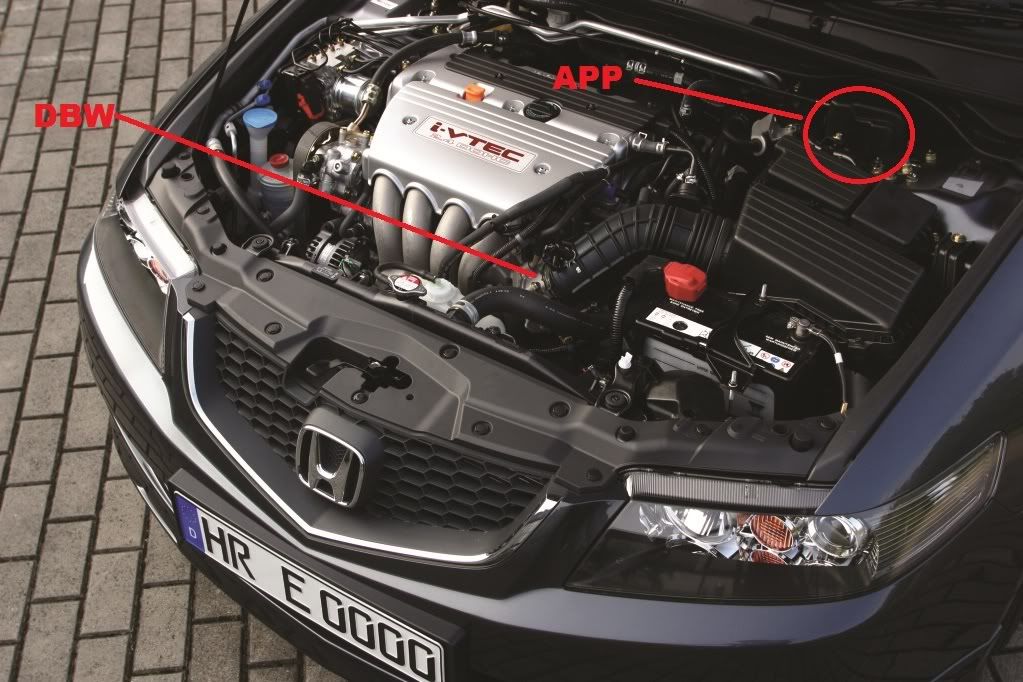Ok this is pretty simple but need to understand all the components and logic behind it .This is applicable to petrol preface lift 2.4 and facelift 2.0 and 2.4 , as for diesel who bloody cares.
The entire system is called
ETC aka in the Honda world as the
Electronic Throttle Control
The two major components in this system are the
APP aka Accelerator Pedal Position Sensor and
DBW Drive by wire.
What is
APP ? This replaces the mechanical linkages between the accelerator pedal and the throttle, but the APP still uses a wire to give the driver the positive progressive feel and feedback. With the big organ sizes pedal and wire you got to admit the pedal feel on our car is spot on. Now to make the mechanical changes from the pedal understandable in volts to the ECU the APP is piggybacked on by the
APS aka Accelerator Position Sensor.
The signal from the APS is proportional to the accelerator position being fed by the wire and gives the corresponding volts to the ECU how much to open and close the engine throttle.
What is
DBW
The drive by wire unit consists of a
TA aka Throttle Actuator and
TPS aka Throttle Position sensor The APS is feeding info to the ECU which in turns feeds the TPS which tells the TA how much the throttle should be opened in respect to the APS. DBW unit is driven by a little DC motor which is a fed info directly from the TA. Inside the car under the dash you have the Throttle Actuator Control module relay & Throttle Actuator Control Module
. This module enables data logging on the ECU.
Now how does this mileage calculated then?
When the engine is idling the ECU controls the TA to maintain the proper idle speed according to engine loads. When the accelerator pedal is pressed the ECU open throttle valve depending on the APP and APS sensor signal. This data is constantly being logged on ECU.
The base MPG is purely calculated on throttle positioning. Use less of that throttle you will get higher mileage, do down a hill with no throttle you will see the GUI displaying 100 MPG the minute you touch it is comes down quickly.. Hence the huge variation in city driving and cursing on the motorway.
ETS is a very complex beast which heavily integrates with three core area namely ABS & TCS Traction Control System & Side slip control to make up VSA , that for another thread which is very interesting..

